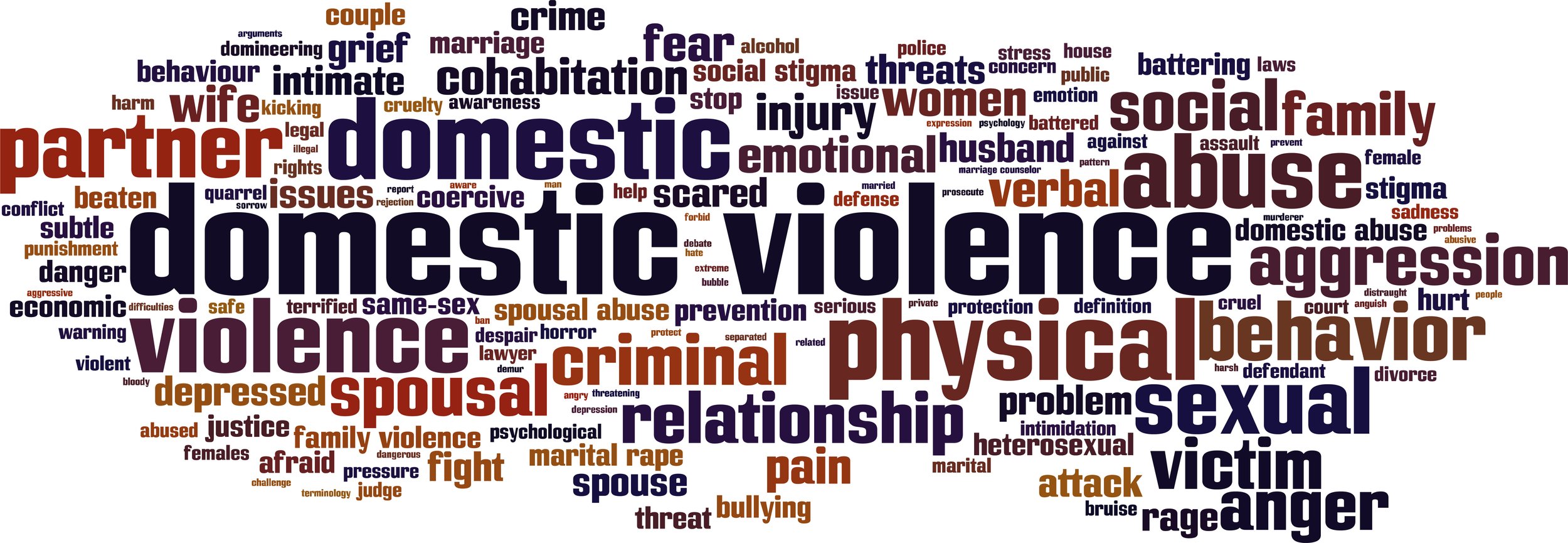
The chains of abuse are heavy, but YOU have the strength to break them!
Stop Violence, End The Silence. Speak Up!
-
National Domestic Violence Hotline
The National Domestic Violence Hotline offers confidential help, the hotline operates 24/7, ensuring that survivors can reach out for assistance at any time. The hotline’s primary goal is to provide immediate support, crisis intervention, and information about available resources.
-
Gabby Petito Alliance
The Gabby Petito Alliance provides you with a comprehensive collection of valuable resources such as detailed guides, insightful articles, and practical tools that are designed to empower you. Gabby’s alliance is committed to assisting you in overcoming challenges and making confident, informed decisions.
-
National Center for Victims of Crime
Available weekdays 9am-5pm EST. Services are available for all victims of crime in the United States and its territories. Visitors to the hotline receive strength-based and trauma-informed services and referrals in over 200 languages.
-
Domestic Shelters
Domestic Shelters is a comprehensive online resource dedicated to providing information and support for individuals affected by domestic violence. The platform serves as a vital tool for victims seeking help, offering access to a wide range of services, including shelters, legal assistance, and crisis hotlines
-
National Teen Dating Abuse Helpline
The National Teen Dating Abuse Hotline provides information and support for healthy relationships, particularly for young individuals. It offers resources and guidance on various aspects of relationships, including dating, personal safety, and ending unhealthy relationships.
-
StrongHearts Native Helpline
StrongHearts Native Helpline provides support for domestic violence and dating violence in Native American communities. They offer culturally appropriate services, which is crucial because mainstream resources might not address specific cultural needs. Their services probably include crisis intervention, safety planning, and referrals to local resources.
Manipulation by the Abuser
Abusers frequently present themselves as charming and charismatic individuals in public settings while exhibiting controlling and abusive behaviors behind closed doors. This can lead others such as friends, family members, and even individuals in positions of authority to view the abuser as stable and trustworthy while perceiving the victim as anxious or unstable.
This type of manipulation is evident in the body cam video taken during the traffic stop after a bystander placed a 911 call informing police that a male (Brian) was seen slapping a woman (Gabby).
"Believe the victim, not the perpetrator's excuses."
Just to be clear, this is NEVER “ok”.
“They don’t have to hit you for it to be abuse. They can degrade, humiliate, blame, curse, manipulate or try to control you. It’s still domestic violence.”
Domestic Abuse Escape Plan
Creating a domestic abuse escape plan is a critical step for anyone experiencing violence or abuse in their relationship. This plan should be personalized and practical, focusing on improving safety while still in the abusive situation and preparing for a safe exit. Here are the essential components to consider when formulating your escape plan:
1. Assess Your Situation Understanding the dynamics of your relationship is crucial. Recognize the signs of abuse, which can be physical, emotional, psychological, or financial. Acknowledge that you are not responsible for the abuse and that it is essential to prioritize your safety.
2. Identify Safe Locations Decide where you can go if you need to leave quickly. This could include:
A trusted friend’s or family member’s home.
A local shelter for victims of domestic violence.
Any location where you feel secure and can access help.
3. Develop a Support Network Inform trusted individuals about your situation. This could include friends, family members, coworkers, or neighbors who can provide support when needed. Establish code words or signals with them to indicate when you require immediate assistance.
4. Prepare Important Documents Gather important documents that you may need when leaving:
Identification (driver’s license, passport).
Financial information (bank account numbers, credit cards).
Legal documents (marriage certificate, custody papers).
Medical records and prescriptions. Keep these documents in a safe place where they are easily accessible.
5. Pack an Emergency Bag Prepare a bag containing essentials that you can grab quickly if you need to leave:
Extra clothes.
Medications.
Important documents (as mentioned above).
Money or bank cards. Store this bag at a trusted friend’s house or another secure location.
6. Create an Exit Strategy Plan how you will leave safely:
Know the best routes out of your home.
Keep your car fueled and parked in an accessible location.
If possible, back your car into the driveway for a quick getaway.
Ensure all doors are unlocked for easy access.
7. Practice Your Plan Rehearse your escape plan so that it becomes second nature. Familiarize yourself with your routes and ensure that any children involved understand what to do in case of an emergency.
8. Seek Professional Help Contact organizations specializing in domestic violence for guidance and support:
The National Domestic Violence Hotline offers resources and advice on creating safety plans.
Local shelters often provide counseling services and legal assistance.
9. Document Incidents of Abuse Keep a detailed record of any incidents of abuse including dates, times, descriptions of events, and any witnesses present. This documentation may be useful if legal action becomes necessary.
10. Stay Vigilant About Digital Safety Be aware that internet usage can be monitored by abusers. Use safe computers at libraries or trusted friends’ homes to research resources without leaving traces on your personal devices.
By following these steps carefully and methodically, you can create an effective escape plan tailored to your specific circumstances. It’s never too late..
How can YOU support a victim?
1. Believe and Validate Their Experience
It is crucial to reassure your loved one that you believe them and that their feelings are valid. Many survivors of intimate partner violence may feel isolated or doubt their experiences due to the manipulative tactics of their abuser. By affirming their reality, you help them feel supported and understood.
2. Prioritize Their Safety
Discuss safety planning with your loved one. This includes identifying safe places they can go in an emergency, having a packed bag ready with essentials, and knowing whom to contact for immediate help (such as local shelters or hotlines). Emphasizing physical safety is paramount, as abuse often escalates over time.
3. Offer Emotional Support
Be there to listen without judgment. Survivors may experience a range of emotions including fear, anger, sadness, and confusion. Allow them to express these feelings freely and provide reassurance that it’s okay to feel this way.
4. Encourage Professional Help
Gently suggest seeking professional support from counselors or therapists who specialize in domestic violence. These professionals can provide coping strategies and resources tailored to their situation.
5. Maintain Connection
Isolation is a common tactic used by abusers to control their victims. Keep in touch with your loved one regularly through calls or visits, showing them that they are not alone and that you care about their well-being.
6. Help with Practical Needs
Offer assistance with daily responsibilities such as childcare, grocery shopping, or transportation. Survivors often juggle multiple roles and may need help managing these tasks while dealing with the emotional toll of their situation.
7. Respect Their Choices
Understand that leaving an abusive relationship can be complex and dangerous. Avoid pressuring them into making decisions about their relationship; instead, support whatever choice they make at their own pace.
By following these steps, you can provide meaningful support to a loved one experiencing intimate partner violence while respecting their autonomy and choices.



